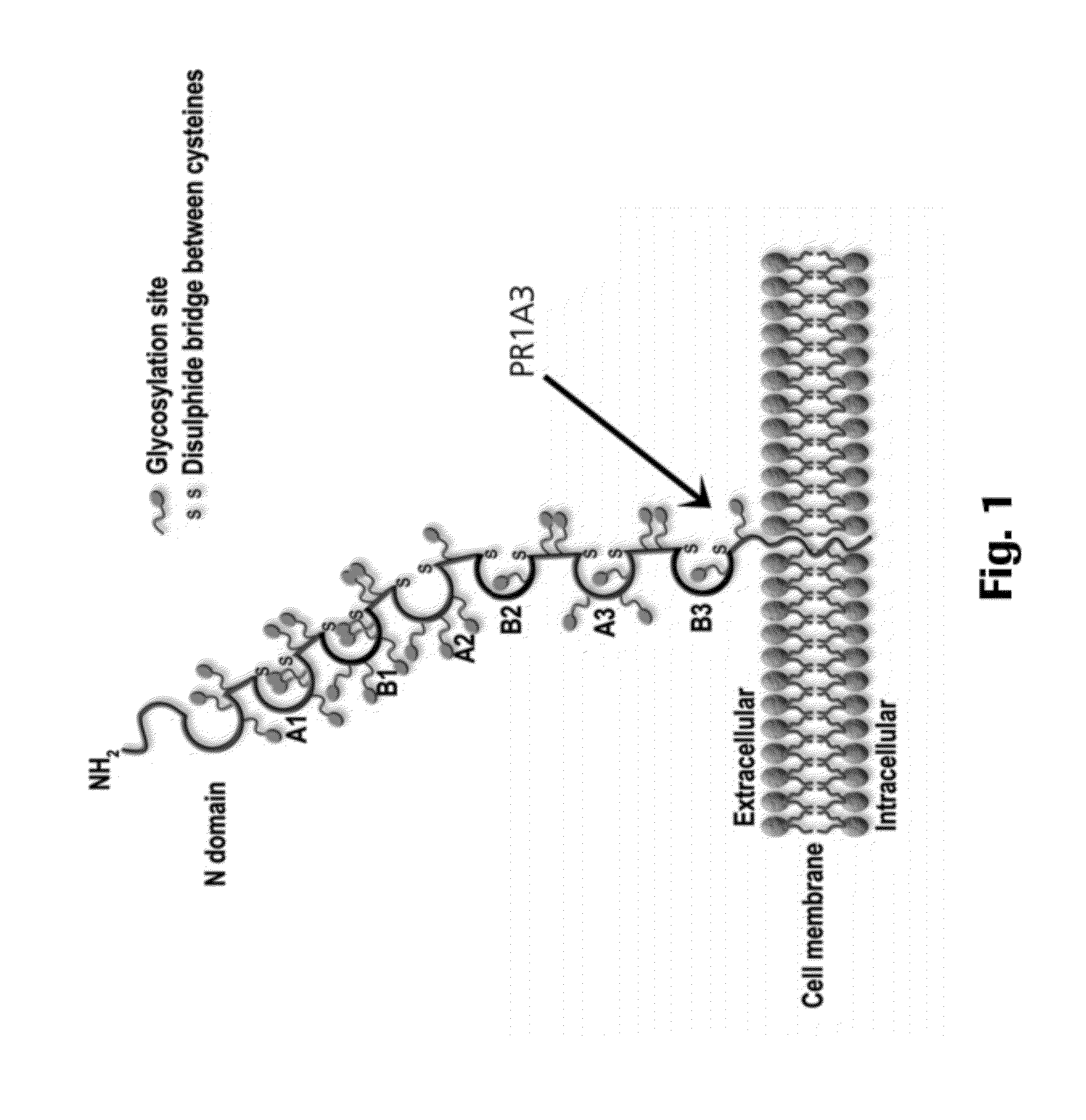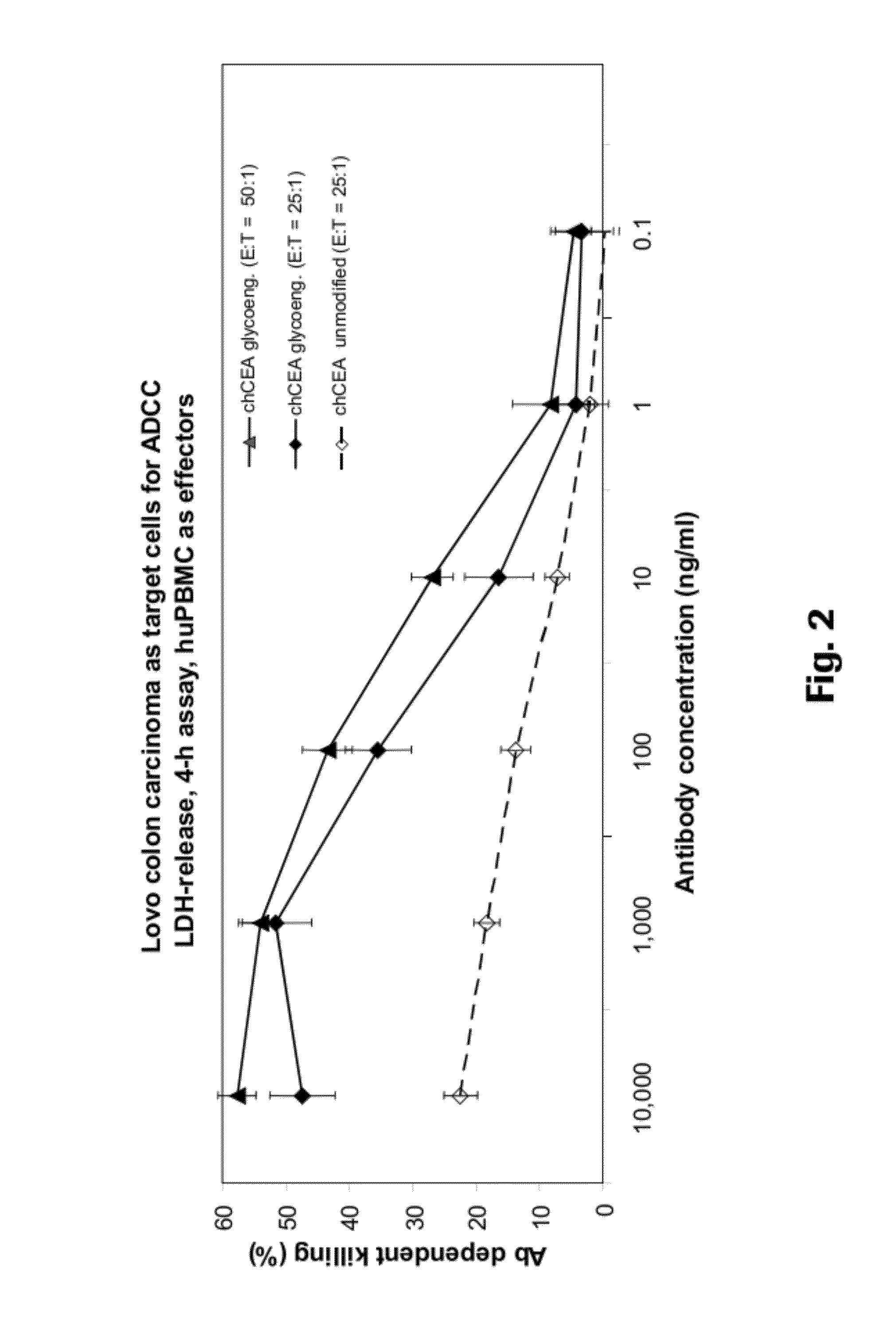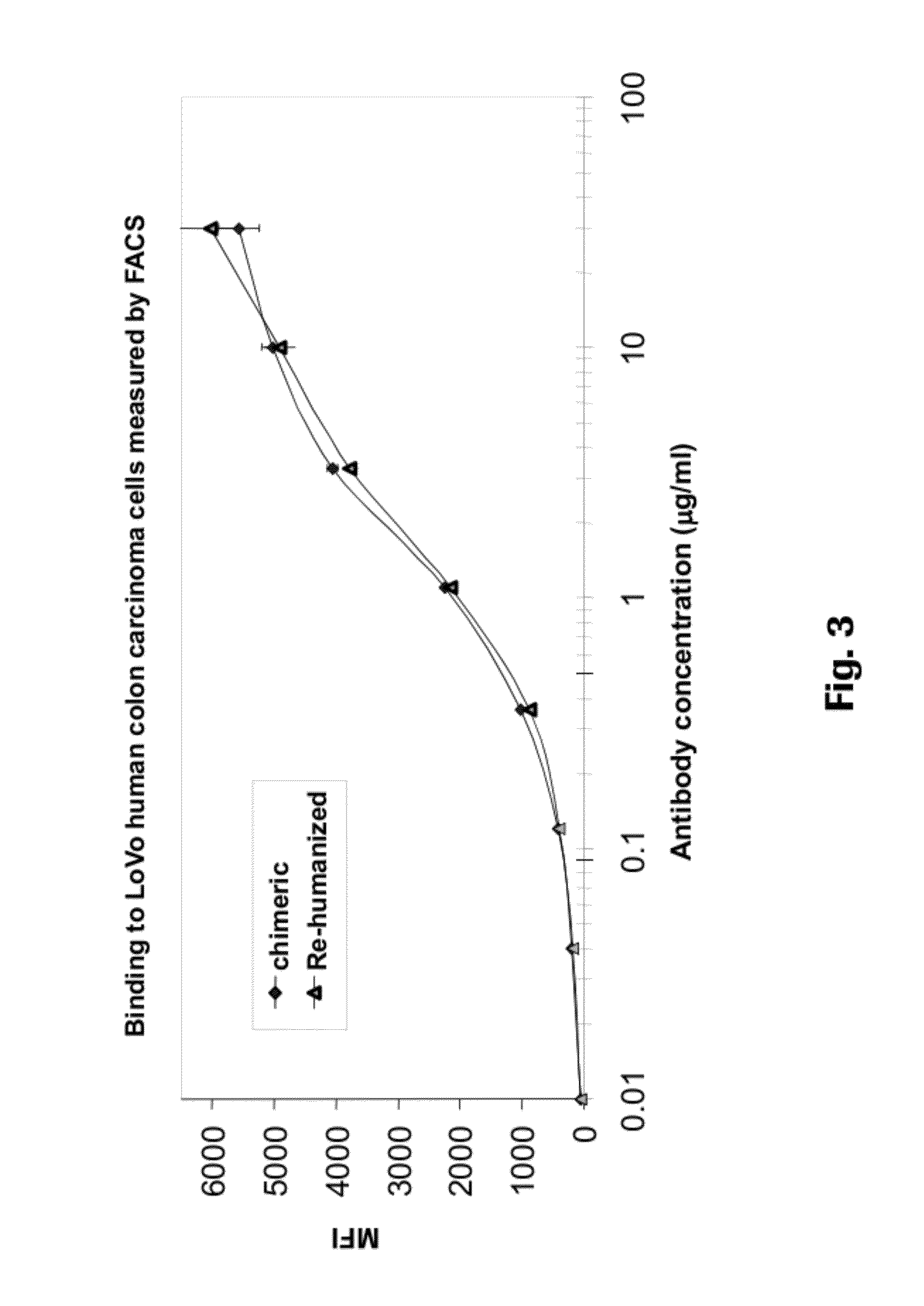Anti-CEA antibodies
a technology of anti-cea and antibody, which is applied in the field of recombinant monoclonal antibodies, can solve the problems of limiting clinical effects, limiting the potential clinical effect, and limiting the ability to raise anti-cea, so as to achieve the effect of increasing the survival tim
- Summary
- Abstract
- Description
- Claims
- Application Information
AI Technical Summary
Benefits of technology
Problems solved by technology
Method used
Image
Examples
example 1
Generation of Affinity Maturation Libraries
[0230]H1 / H2 Library
[0231]For generation of an affinity maturation library randomized in the HCDR1 and HCDR2 region, triplets encoding positions F32 G33 in CDR1 and positions W50 N52 T52a K52b T54 E56 T58 in CDR2 were randomized. In a first step, a DNA fragment (fragment 1) was amplified using pMS22 as a template and primers MS-43 (SEQ ID NO: 123) and EAB-679 (SEQ ID NO: 127) which contains the randomized CDR1 positions (FIG. 11). Using the same template, primers MS-56 (SEQ ID NO: 126) and MS-52 (SEQ ID NO: 124) amplified a second fragment (fragment 2) which has an overlapping region with the 3′end of fragment 1. Amplification conditions included an initial 5-min 94° C. incubation step followed by 25 cycles, each consisting of a 1-min 94° C. denaturation, a 1-min 55° C. annealing, and a 20-sec and 50-sec 72° C. elongation step, for fragment 1 and fragment2, respectively. A final 10-min 72° C. incubation step was performed at the end. Both fr...
example 2
[0238]The PR1A3 antibody was chimerized to have a human IgG1 / kappa constant region, and expressed using the GylcoMab technology in order to have a high degree of afucosylated sugars in the Fc. The glycoengineered and non-glycoengineered antibodies were compared at a effector to target ratio of 25:1. The maximal amount of antibody dependent target cell killing was doubled by glycoengineering of the Fc region (FIG. 2). A further increase in cell killing was achieved by increasing the effector to target ratio (FIG. 2).
[0239]PR1A3 was humanized using frameworks identical to human germline sequences. The IMGT sequence IGHV7-4-1*02 (Accession No. X62110) was the acceptor for VH humanized and IMGT_hVK—1—39 (Accession No. X59315) was the acceptor for VL humanization. A humanized PR1A3 antibody comprising a heavy chain variable region construct CH7A and a light chain variable region construct CL1A showed satisfactory binding to human colon carcinoma cells as measured by flow cytometry (FIG. ...
example 3
[0244]The acceptor framework used in generating the affinity matured anti-CEA antibodies described in Example 2 was of the human VH7 class. In order to increase stability, a more stable acceptor framework sequence was used as the basis for stability engineering of the antibody. Based on sequence homology of the murine antibody PR1A3, and the assumption that VH1 derived sequences should have a higher intrinsic stability than VH7, or the even numbers of the human VH clans (Ewert, S., Huber, T., Honegger, A. and Plückthun, A. (2003) J. Mol. Biol., 325, 531-553), the sequence IGHV-1-18; Acc No.:M99641 was used as the new acceptor framework. Conventional CDR loop-grafting of the PR1A3 antibody lead to construct CH1A (SEQ ID NO: 279). Unfortunately, this molecule did not show significant binding activity towards the CEA antigen. The binding activity of this construct was compared to the binding activity of the chimeric antibody PR1A3 harbouring mouse-derived variable domains at various co...
PUM
| Property | Measurement | Unit |
|---|---|---|
| molecular weight | aaaaa | aaaaa |
| temperature | aaaaa | aaaaa |
| pH | aaaaa | aaaaa |
Abstract
Description
Claims
Application Information
 Login to View More
Login to View More - R&D
- Intellectual Property
- Life Sciences
- Materials
- Tech Scout
- Unparalleled Data Quality
- Higher Quality Content
- 60% Fewer Hallucinations
Browse by: Latest US Patents, China's latest patents, Technical Efficacy Thesaurus, Application Domain, Technology Topic, Popular Technical Reports.
© 2025 PatSnap. All rights reserved.Legal|Privacy policy|Modern Slavery Act Transparency Statement|Sitemap|About US| Contact US: help@patsnap.com



